
Find out how much it costs to plant a tree based on the number of trees, their size, where you want to plant them, and DIY versus professional costs.
Knock on wood that your trees don't encounter these common fungi


Not all fungi are deadly to trees, but it’s worth investigating to rule out dangerous infestations.
Treatment options depend on fungus type, but common solutions include pruning infected branches and applying herbicide.
Some fungi are dependent on tree species, such as yellow tree fungus, needle blight, and foliar fungus.
There are tons of tree fungus types, and you should stay vigilant for signs of them in your trees. A fungus can break down the integrity of a tree in different ways. Some fungi attack the tree's ability to circulate water and nutrients, while others will target the leaves, depriving the tree of photosynthesis.
While not all fungi kill the tree, they can lead to structural damage that puts it at greater risk of other pests and diseases. This guide breaks down some of the most common tree fungus types, how to identify them, and how to treat them.
When taking on this project, expect questions only a pro can answer. With our network of local pros, you'll get the job done and your questions answered—without the hassle and stress of doing it yourself.

Yellow tree fungus, also called bracket fungus or sulfur fungus, is hard to miss. You've most likely seen it on trees before. It's called the "chicken of the woods" because it’s edible to humans; however, it’s harmful to trees and can cause internal rot.
This fungus is yellowish to orangish, and it grows up and down the trunk of a tree.
Yellow tree fungus affects a variety of trees, including maple, ash, and oak trees.
You can prevent yellow fungus on trees by being careful with how you prune a tree's branches. Cut the branches at a 45-degree angle to prevent water from collecting and creating a fertile spot for the fungus to grow. Avoid pruning as much as you can, as this fungus thrives on tree wounds.

Anthracnose, often called leaf blight, mainly infects the leaves of trees, although it can spread to the stems. Unfortunately, there's not much that homeowners can do to stop it.
Blotches on the leaves are a common sign of anthracnose.
This family of fungus attacks many tree species but is infamous for infecting “shady” landscape trees like maples, ashes, oaks, and sycamores.
The best way to control anthracnose is to prune the infected leaves and branches, a common practice in tree care. You can also try using a fungicide, but use it sparingly as fungicides can be harmful to other living things.

There are many types of canker diseases, characterized by a fungal pathogen that enters the bark through a wound in the tree. The fungus blocks the tree's vascular system, preventing the circulation of vital nutrients and causing branches to die. Eventually, the entire tree can die in severe cases.
You can identify cankers as dead areas on the tree, usually on the bark or branches.
Because there are many canker-type fungi, a variety of trees can be affected. But some trees are more notorious for catching canker, such as pines, poplars, willows, firs, junipers, and spruces.
You should remove branches that have cankers. However, the best way to deal with cankers is to prevent them from happening in the first place. This includes making sure that trees are growing in a suitable space and preventing injury to the tree.
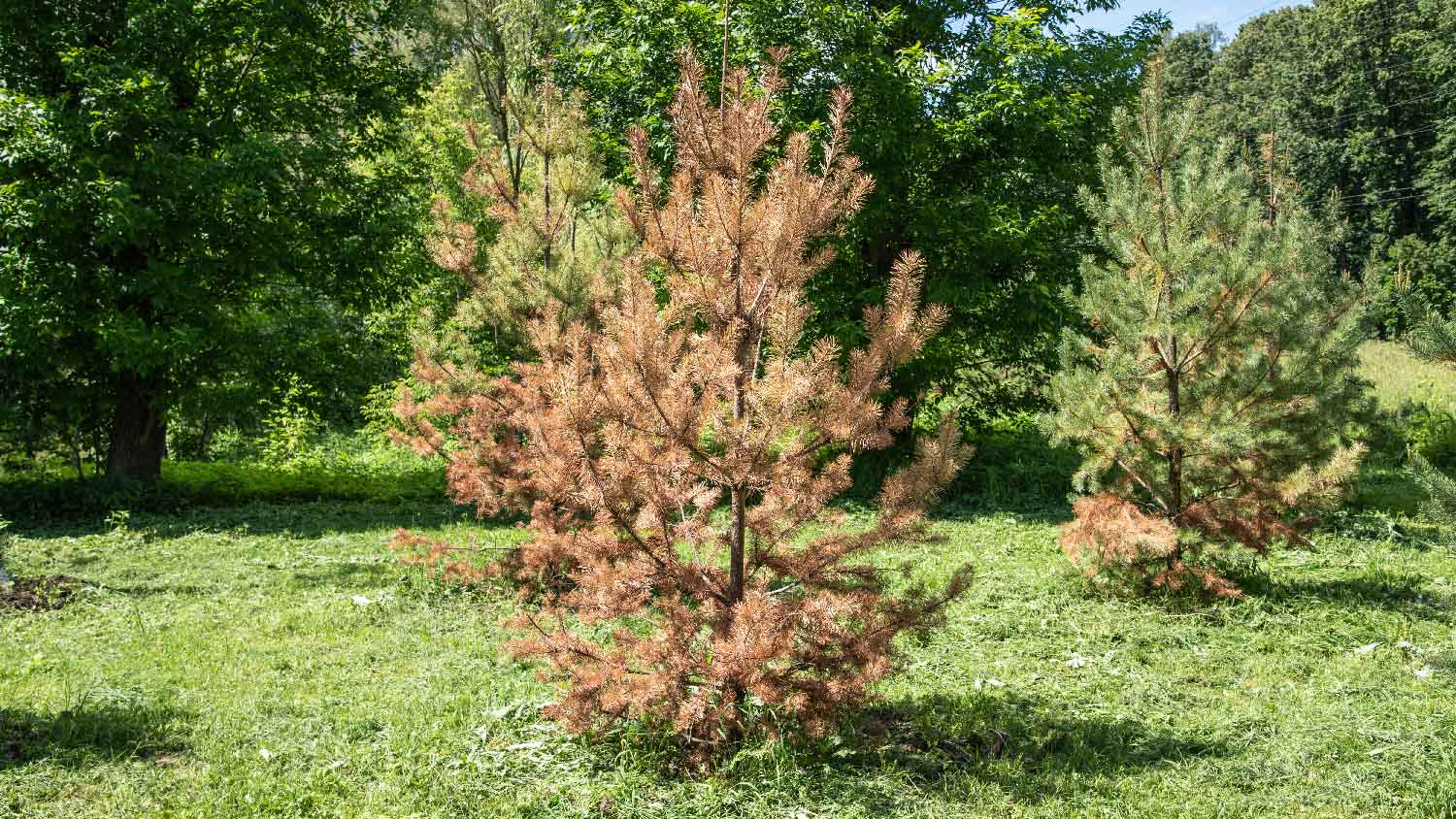
Needle blights affect pine trees when a fungus grows inside the needle, causing them to die. If left untreated, needle blights can eventually kill the entire tree. However, not all needle blights are serious.
This fungus is easily confused with a white powdery substance on pine trees, which is a separate issue caused by an insect called pine needle scale.
Needle blight manifests as reddish-brown spots on normally green needles. It eventually causes needles to become completely brown.
Needle blight affects a variety of pine trees, including longleaf pines and Scots pines.
The best way to treat needle blight is by applying a fungicide in the spring and again in the late spring to early summer.

Tar spot primarily affects maple and sycamore trees. While unsightly, they’re not usually dangerous to the tree's overall health.
Tar spots appear as dark blemishes and spots all over the leaves. These spots usually show up in late spring to early summer.
Tar spot affects several species but is most infamous for attacking maple trees, including silver maple, sugar maple, and Norway maple. It can also spread to holly, willow trees, and tulip trees.
While you can treat tar spot with a copper-based fungicide, it's unnecessary, and fungicides can harm other life forms.
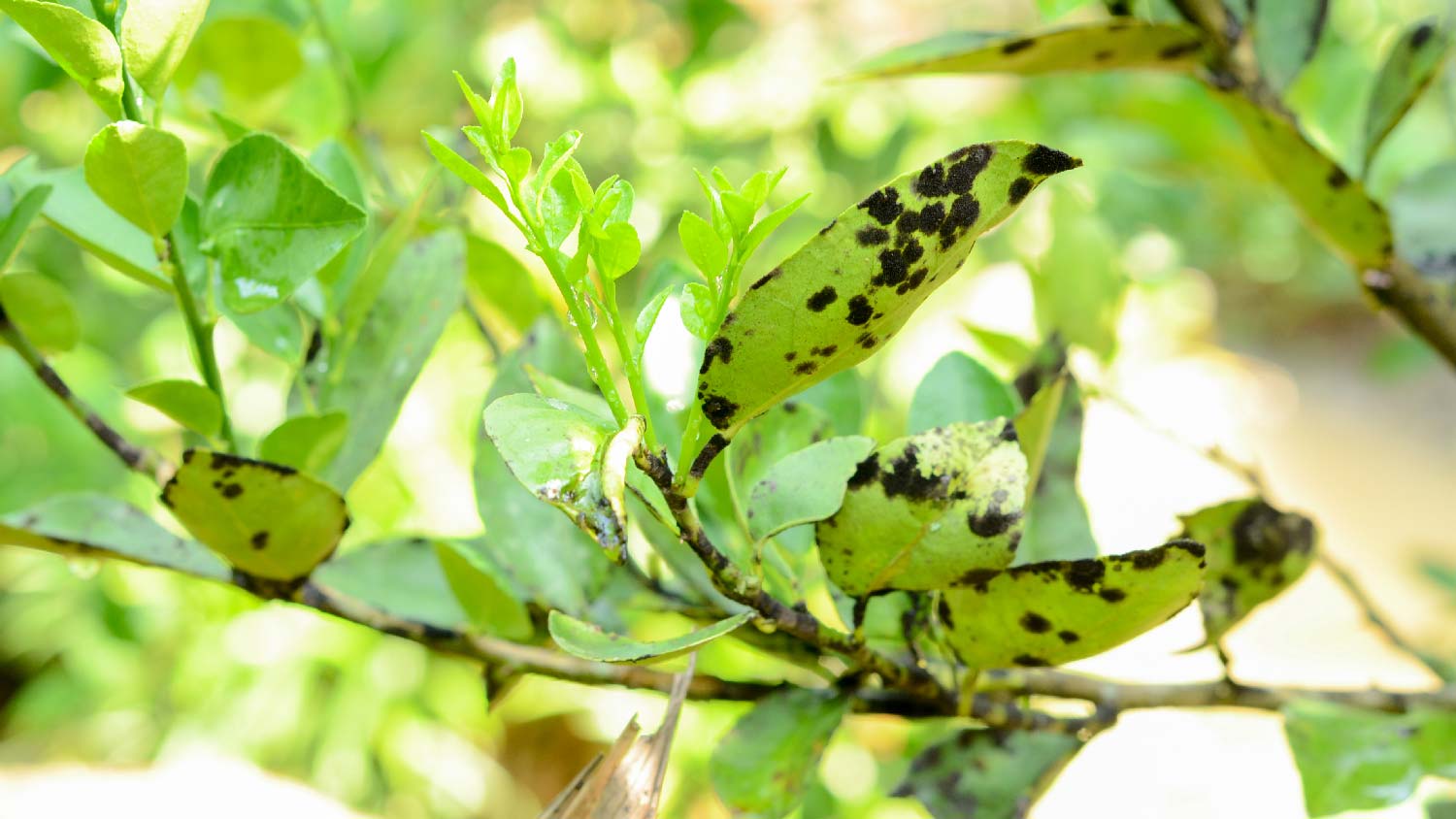
This fungus results in a soot-like substance on the leaves. However, sooty mold isn’t a disease because the fungus lives within the honeydew secretion left on leaves by insects like aphids. Therefore, it’s not penetrating the tree.
A black ash-like coating covers the leaves, and it may feel sticky to the touch due to the honeydew secretions.
Sooty mold is the result of aphids and other insects, which are drawn to trees like elms, lindens, maples, and some kinds of pines.
Treating sooty mold is unnecessary because it’s not a threat to the tree. If you want to avoid the unsightly appearance, the best option is to drive away the insects that produce the honeydew. This can be as simple as regularly spraying the leaves with water to knock off insects.
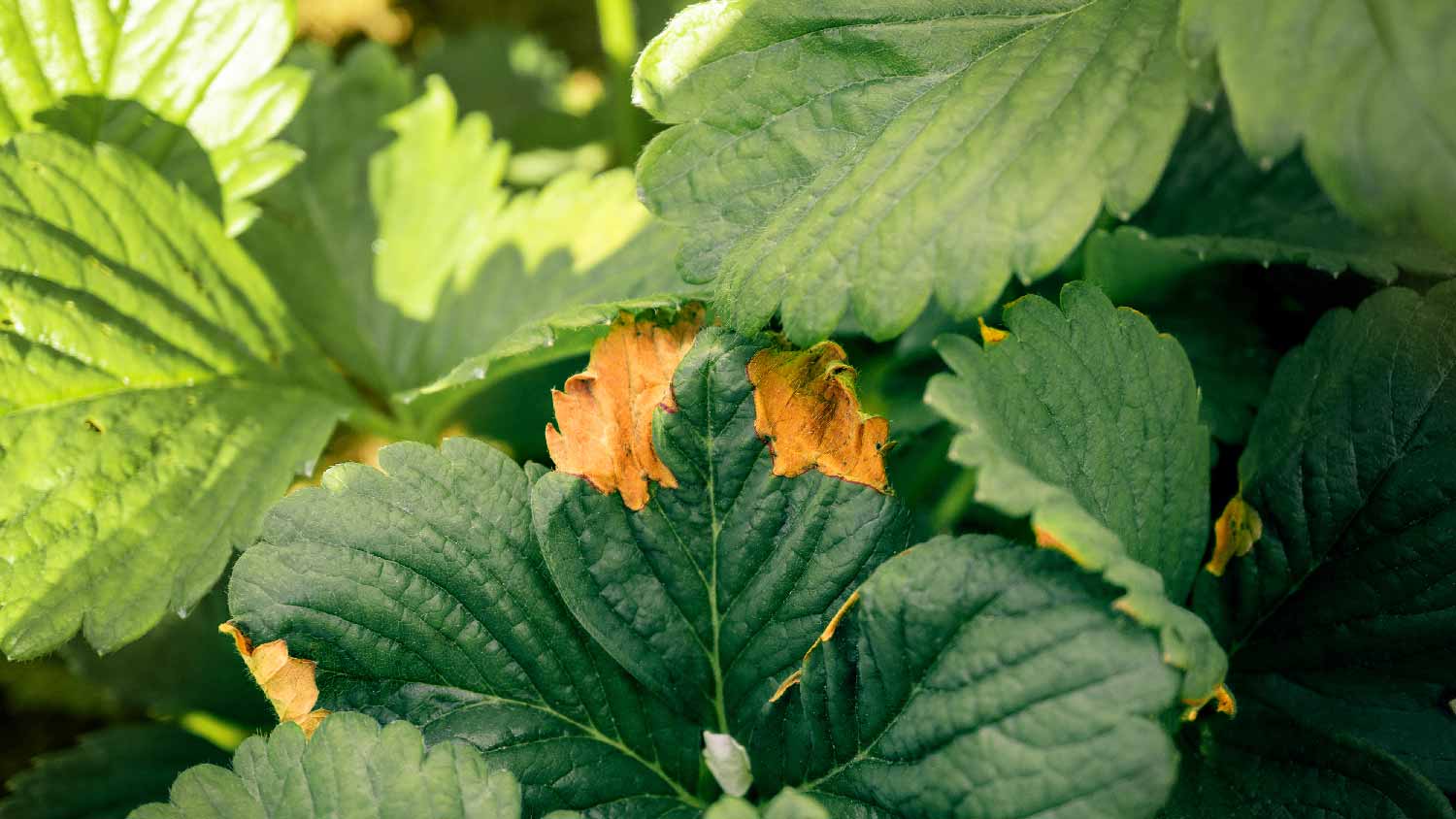
Shoot or foliar fungus attacks the foliage of trees, destroying leaves and delicate stems. It’s particularly dangerous to new shoots because it can infect them before they grow, halting new growth and potentially wounding the tree. Otherwise, the infection often ends after deciduous leaves fall.
Shoot fungus appears as dark spots spread over outdoor surfaces, including plants. Once it infects a leaf, it causes dark blotches on the surface.
This fungus prefers broadleaf trees including maples and aspens but may affect other species, too.
Copper-based fungicides are best for treating this fungus.
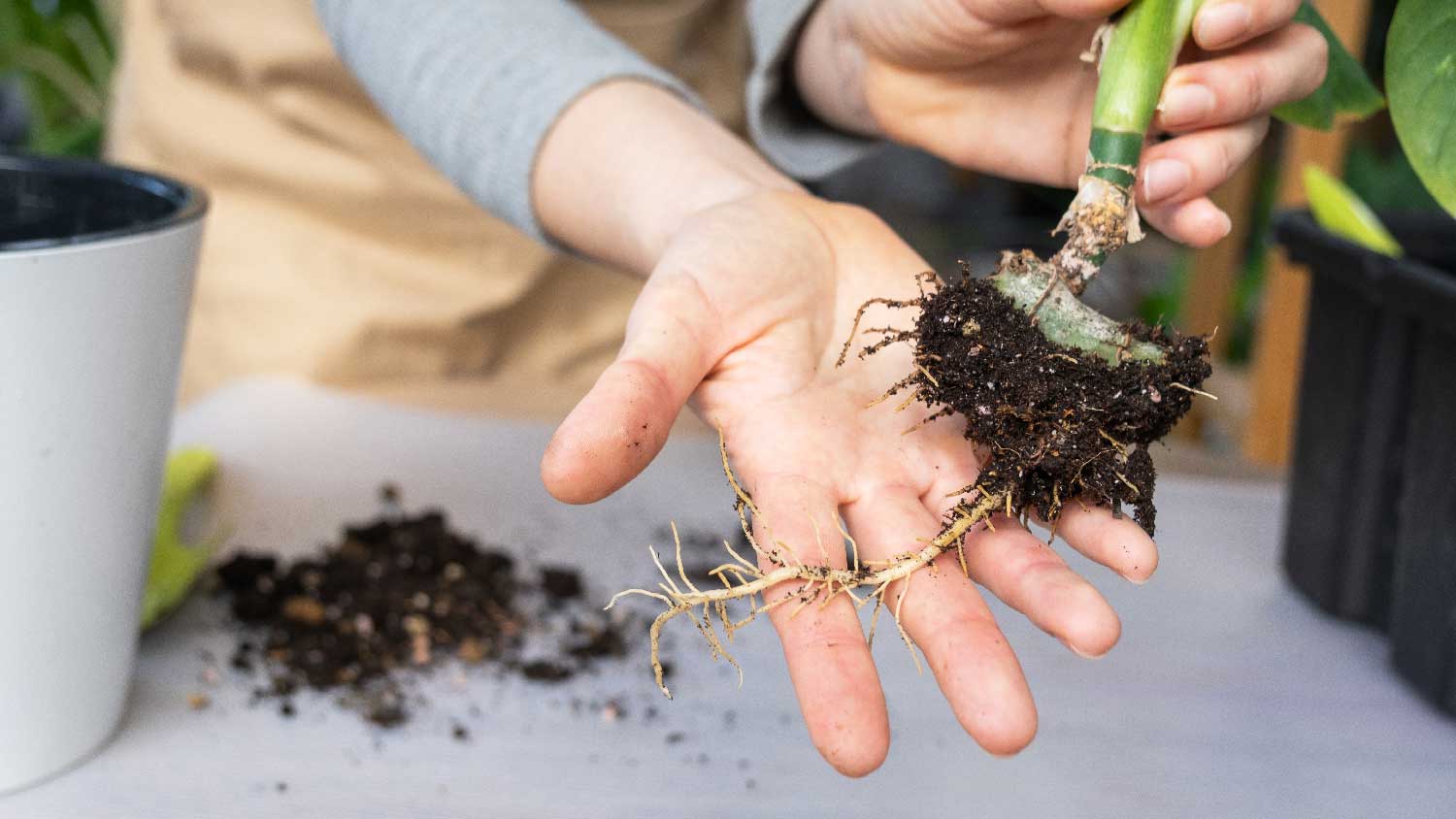
Root rot is a serious tree problem caused by overwatering that suffocates the roots. The rot can spread to healthy roots and kill the tree entirely if left unchecked as the roots decay.
A fungus that lives in the soil can also cause root rot, and it can be activated by overwatering. Fungal root rot can kill trees where they stand, making them potential fall hazards as they decay.
You'll notice that the tree's leaves turn yellow prematurely. Or, you may see that the tree is not growing well, and its canopy is thinning.
The fungal version of root rot comes in many forms and can attack many types of trees, but trees with roots closer to the surface or in moist soil are more susceptible. Species affected can range from cedars and hemlocks to firs, pines, larches, and spruces.
Dig around the roots to expose the ball of the roots, and then use a garden hose to rinse it off. Cut away infected roots, and use a fungicide. Contact a tree service company near you if you’d rather leave this job to a pro.
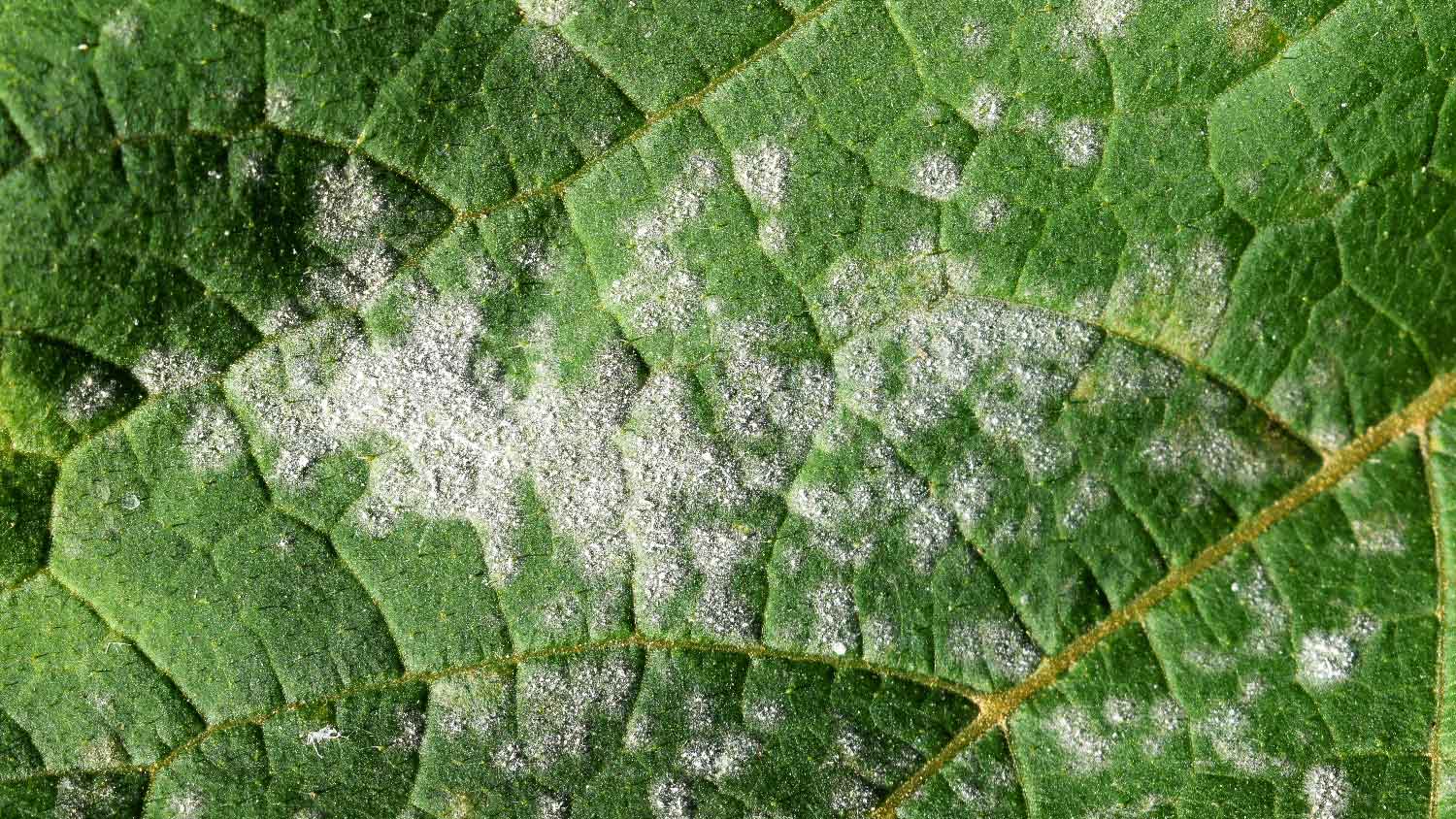
Powdery mildew is common in humid environments, including greenhouses. This disease can cause the tree's leaves to turn yellow or brown. In rare cases, this white mold on trees can result in tree death.
It's easy to spot powdery mildew because it appears as powdery gray spots resembling talcum powder on the leaves.
Powdery mildew can infect nearly any type of tree, but it’s most common among maples, oaks, dogwoods, crabapples, and basswoods. It can also attack lilacs and magnolias.
Sulfur-based fungicides are best for treating powdery mildew. Also, you can prune the tree by removing any infected leaves to keep the disease from spreading.
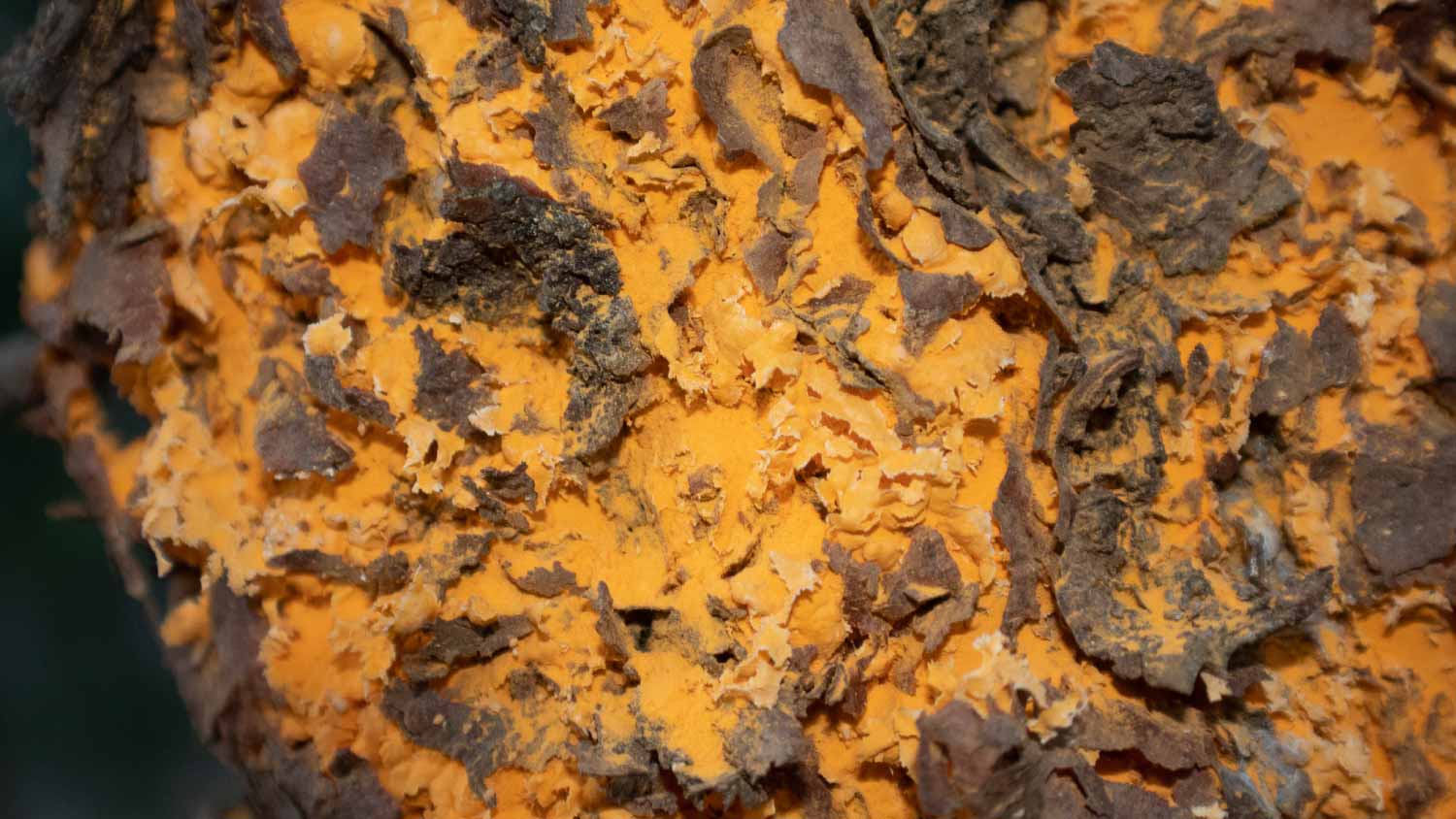
Fusiform rust and its cousin eastern gall rust, among others, are a relatively new problem for North American trees but have spread quickly in recent decades from a suspected non-native origin. They are unsightly and dangerous for trees, killing both branches and trunks over time, and are more common in the southern United States. These rusts have the ability to spread more easily than many other fungal infections, releasing clouds of spores that can quickly travel through groves, forests, and orchards.
Fusiform and similar rusts create large galls or cankers on the thicker limbs and trunks of trees. This particularly ugly fungus is an orange color when it begins to release spores.
Fusiform and similar rusts usually attack pines and oaks.
Early treatment with fungicides is important to prevent fusiform and gall rusts. Once they have developed, they can be difficult to remove without seriously injuring the tree. It’s best to avoid planting susceptible trees in areas where fusiform rust is likely to be present.

Often labeled as a wilt because of its swift and destructive effect on leaves, DED is a dreaded killer of elm groves. It’s a voracious fungus that can act as both a parasite and a saprophyte, feeding on living and dead tissue alike to prevent an elm’s sap system from working. It’s frequently spread by bark beetles or when the roots of close elms grow together, and it can kill an elm tree in as little as a single year.
Watch for elms where a section of leaves suddenly wilts and dies. This calls for peeling away bark in selected sections and looking for inner signs of rot or disease.
All trees in the elm family are susceptible to this fungus.
Preventing bark beetle infestations can help reduce DED, as can cutting away any dead limbs to avoid giving the fungus a foothold. Currently, one of the most effective treatments is injecting fungicides directly into the living wood of the elm tree, but this is difficult and expensive.
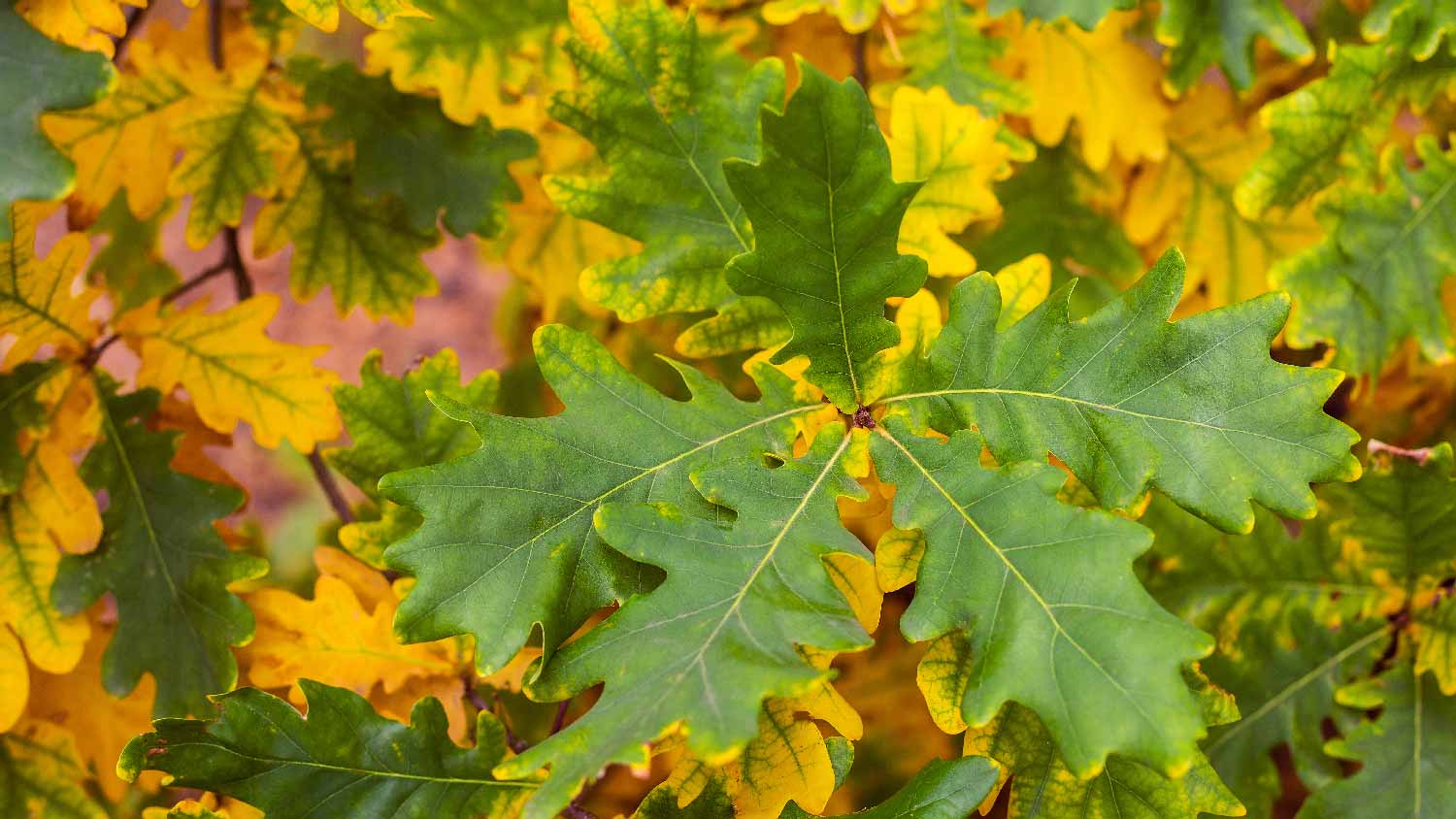
While all wilts can be trouble (so named for how they make leaves wilt), oak wilt is particularly dangerous if you have treasured oak trees to protect. It’s another beetle-spread fungus that attacks the sap system of the tree underneath the bark. Oak wilt can kill a tree very quickly, often in a matter of months if not properly controlled.
Watch for oak leaves that turn brown, then yellow and die off. The infection can also split the bark or reveal fungal mats in vulnerable spots.
This fungus is very bad news for oaks, with red oaks especially in danger of death.
Keep sap battles away from oak trees and seal any pruning cuts. Once oak wilt has been identified, remove the affected tree branches and, if necessary, the entire tree to keep it from spreading.
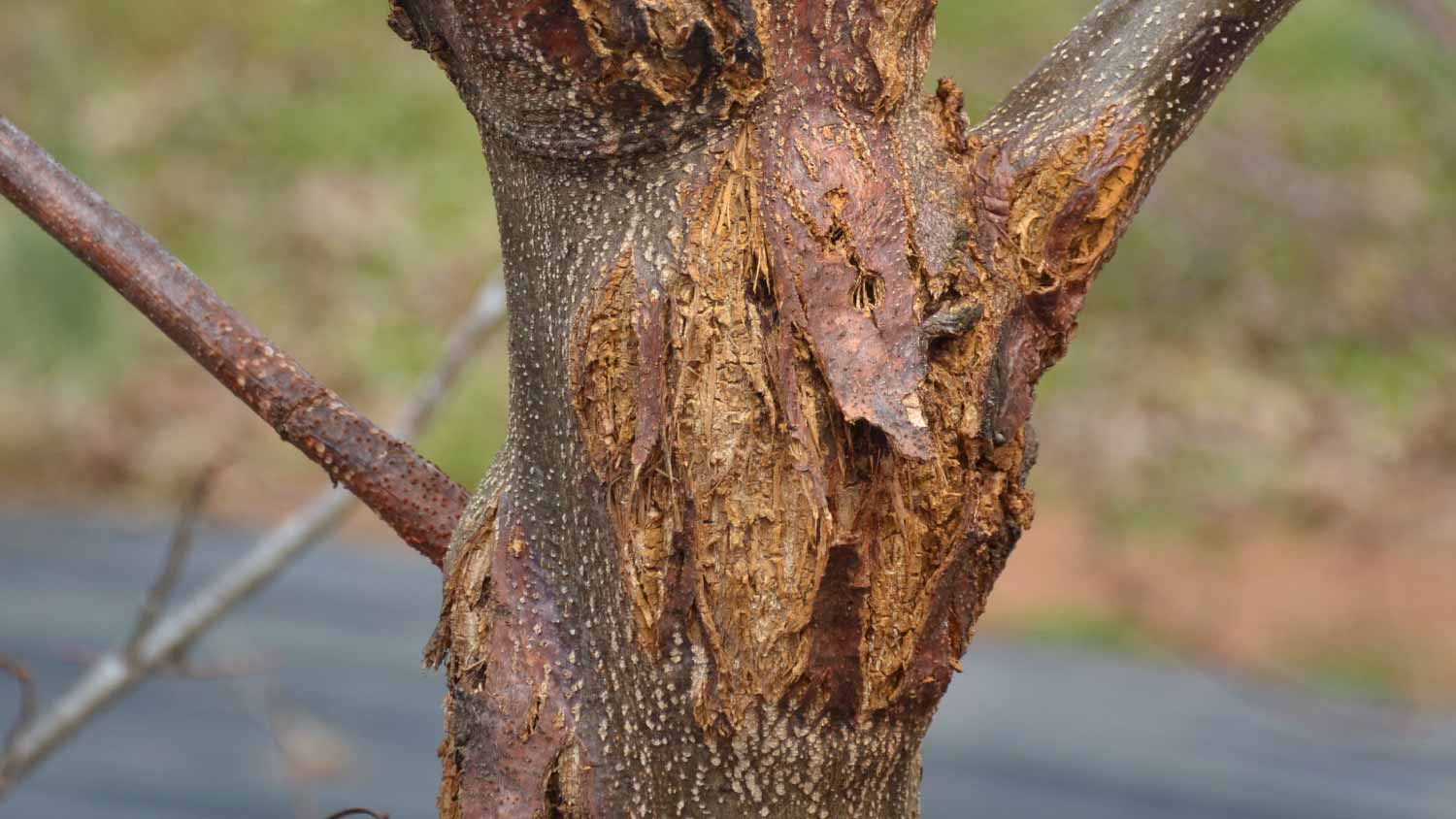
An invasive fungus from Asia, this has destroyed many important groves in America and remains a threat for existing chestnuts. It lives off the inner bark and connective tissue of the trees and can spread readily thanks to its habit of releasing spore trails following a heavy rain. American chestnut species are frequently stunted as a result, often living as shrubs if they manage to survive at all.
This particular blight is infamous for its orange wounds on the bark of a chestnut tree, which it uses to spread spores to other trees.
American chestnut trees face death when infected and have been almost wiped out entirely as a result. European chestnuts have significantly greater resistance to the disease, with Chinese chestnut trees showing the greatest immunity. The fungus can also infect species like oaks and maples, but rarely causes death in those cases.
Copper fungicides can kill surface spores to help prevent the blight from spreading, and in some trees, individual cankers can be treated or carefully removed. However, American chestnuts have little chance of survival once infected.
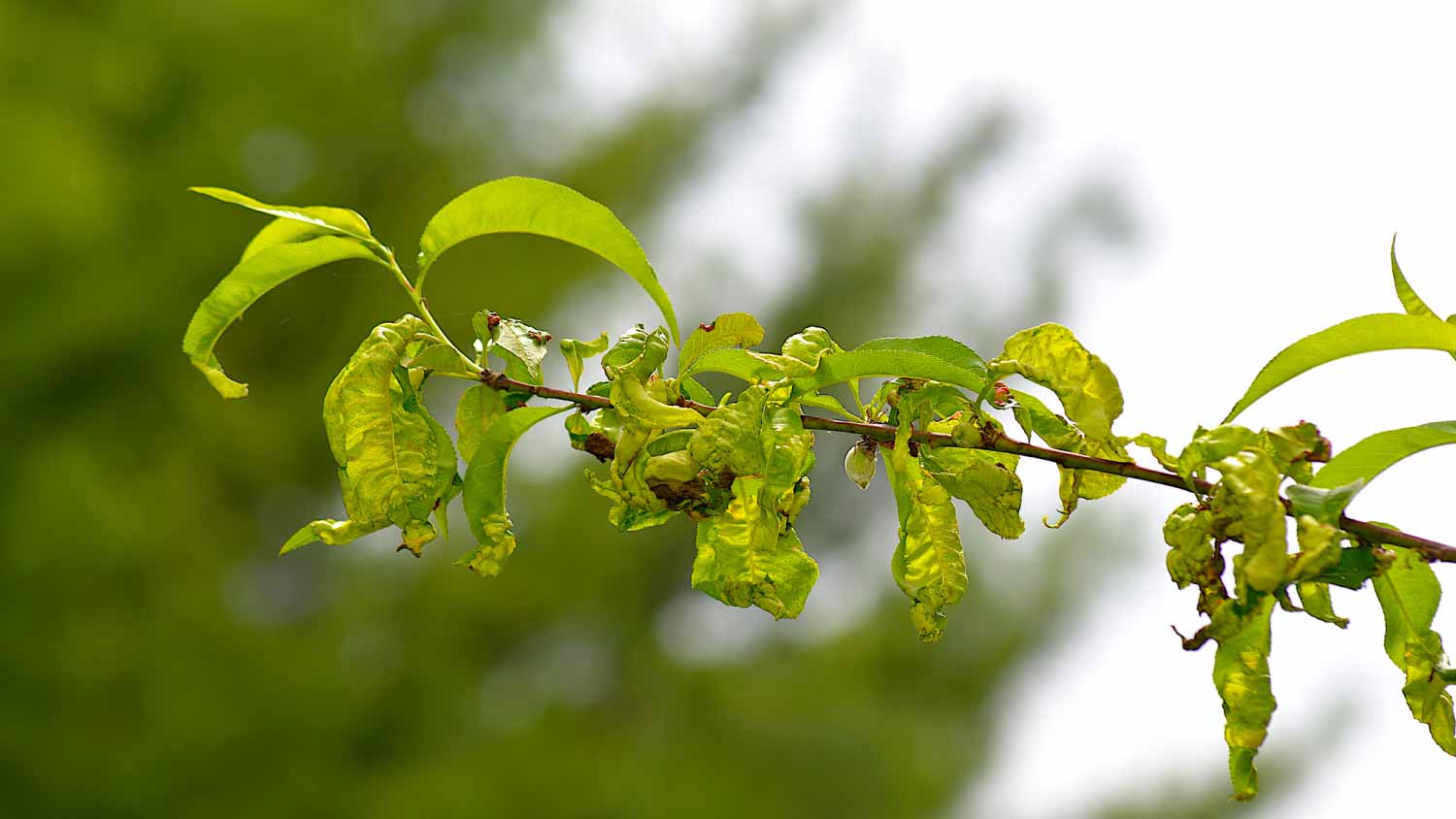
Littleleaf disease is a broad description of a plight facing certain kinds of pine trees. While several factors add up to tree death, one of the most active contributors is a fungus from the Pythium family. This fungus waits in the soil and infects vulnerable roots, slowly killing them over time.
This slow killer will eventually wilt needles and slowly starve the tree as its roots die. Without close inspection, it resembles a tree dying from lack of water over several years.
The disease affects shortleaf pines and similar varieties, primarily in the southern United States where the fungus is common.
Break up and aerate soil, keep trees well-watered, and fertilize shortleaf pine trees well. Avoid planting in high-risk areas where thick soil holds fungi spores. Littleleaf disease fungi are very difficult to remove directly once an infection has begun.

This noticeable fungus can ruin the appearance of ornamental trees and destroy fruit on fruit trees, although it rarely kills off trees entirely. If you plan on harvesting fruit from a tree, it’s important to watch for this disease and tackle it early.
This fungus creates very noticeable holes in tree leaves, almost as though someone shot them with a BB gun. It can spread as lesions onto nearby fruit.
Flowering cherry trees, ornamental plum trees, and laurels are susceptible, as are fruit trees including peach, apricot, and almond trees.
Spraying trees with a fungicide before fruiting occurs is the best way to deal with this fungus.
There's no way to fully shield our trees from encountering fungus in their lifetimes. Fungi spores travel great distances through the wind, on our clothing, on gardening tools, and on the backs of the furry and feathered friends that visit our backyard.
Thankfully, a tree will not become infected simply because it crosses paths with a fungus spore. Think of a tree a bit like your own body and its immune system. When we're healthy, we can fight off most bacteria and viruses that we encounter. One of the qualities of a healthy tree is that it has the natural ability to defend itself against the effects of most fungi.
A damaged or unhealthy tree, however, is more susceptible to a fungus latching on and reproducing. If there is an opening in the tree's bark or roots, for example, the fungus uses the entryway to infiltrate the interior of the tree. And if the tree is stressed from drought, pests, poor soil, or recent damage, it won't be able to hone in on the infection. Common issues that lead to fungus include:
Damaged roots, branches, or trunks
Storm damage
Drought
Overcrowding
Damage during construction
Incorrect tree pruning or trimming
The first step in tree fungus treatment is identification. Visible infection and fungus growth are just one way to identify a dying tree—you will almost always need a trained eye to determine that fungus is at the root of the problem. And so, knowing when to call a certified arborist can save your tree from major fungus damage or worse. Common red flags include:
Wilting leaves
Missing bark
Wood particles around the trunk
Visible fungus growth
Dying branches
Discolored leaves
Soggy or soft areas around tree roots
Your arborist will be able to pinpoint the tree bark fungus identification and how to proceed. They should also be able to tell you whether or not it's DIYable. Here are the top tree fungus treatments to consider.
In many cases, the best way to protect your tree from fungus is to remove the infected branch, leaves, or tree roots. It is best to hire a local tree service to protect the tree from further wounds that can expose it to more infection.
Your arborist may recommend a copper-based or natural fungicide to target unremovable areas of fungus on your tree. It is important to use these sparingly to avoid damaging the surrounding area and plants. However, some fungicide applications can act as an ongoing treatment to keep some fungi from coming back.
After removing the infected area or treating it with a fungicide, it's crucial to boost the health of the overall tree. Keeping your trees healthy and strong requires proper watering, fertilization, and addressing other issues, such as pests or structural damage.
From average costs to expert advice, get all the answers you need to get your job done.

Find out how much it costs to plant a tree based on the number of trees, their size, where you want to plant them, and DIY versus professional costs.

Discover what the current average tree removal cost is based on different factors to know how much it will cost to take care of a dead or troublesome tree on your property.

How much does a palm tree cost? The answer depends on the type of tree, its size, and other factors. Find out how much a new palm tree costs.

Ever wanted to learn how to grow a tree from a branch? Learn how to grow a tree from a cutting to boost curb appeal for much less with propagation.

When trees suffer a lightning strike, what happens to it? Here’s what happens, the factors at play, and what you can do about lightning strikes.

Bamboo has a habit of spreading through root growth. Here’s how to stop bamboo roots in its tracks with the most effective methods, and tips on what doesn’t work.